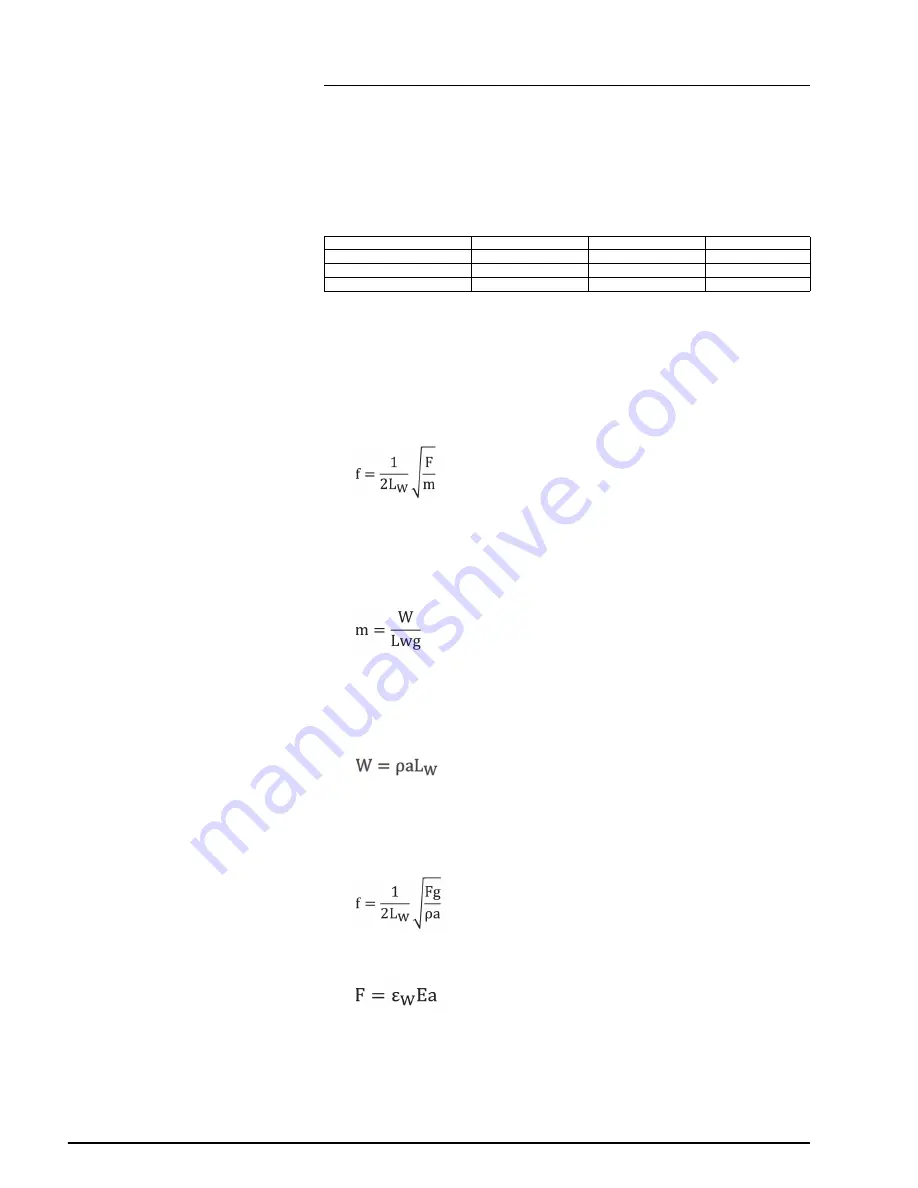
22
| THEORY OF OPERATION | GEOKON
APPENDIX B.
THEORY OF OPERATION
A vibrating wire attached to the surface of a deforming body will deform in a
manner similar to that of the deforming body. These deformations alter the
tension of the wire, which alters its natural frequency of vibration (resonance).
The examples below are calculated using the Model 4200 gauge parameters.
Substitute the values from the table below for Models 4202 and 4204.
Note:
These equations do not apply to Models 4210, 4212, and 4214.
TABLE 10:
Embedment Strain Gauge Theoretical Parameters
The relationship between frequency (period) and deformation (strain) is
described as follows:
1.
The fundamental frequency (resonant frequency) of vibration of a wire is
related to its tension, length, and mass. The fundamental frequency may be
determined by the equation:
Where:
L
w
is the length of the wire in inches.
F
is the wire tension in pounds.
m
is the mass of the wire per unit length (pounds, seconds
2
/inches
2
).
2.
Note that:
Where:
W
is the weight of
L
w
inches of wire in pounds.
g
is the acceleration of gravity (386 inches/seconds
2
).
3.
And:
Where:
ρ
is the wire material density (0.283 pounds/inches
3
).
a
is the cross-sectional area of the wire in inches
2
.
4.
Combining the equations from steps one, two, and three gives:
5.
Note that the tension (
F
) can be expressed in terms of strain, e.g.,
Where:
Ɛ
w
is the wire strain (inches/inches).
E
is the Young’s Modulus of the wire (30 x 10
6
Psi).
Model:
4200/4200HT
4202
4204
Gauge Length (Lg):
6 inches
2 inches
4 inches
Wire Length (Lw):
5.875 inches
2 inches
3.875 inches
Gauge Factor:
3.304
0.391
1.422



























